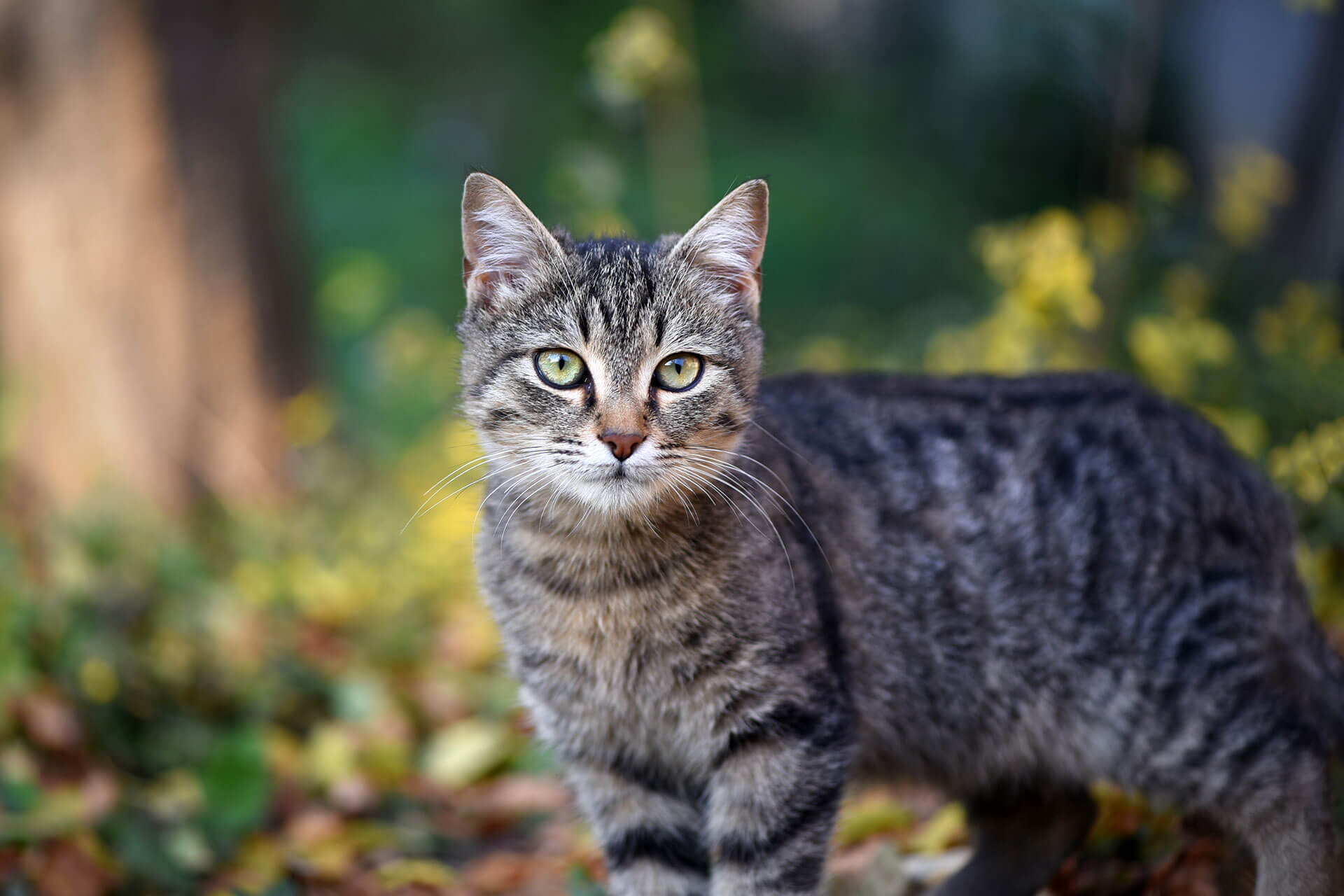10 Tips For Keeping Outdoor Cats Safe & Healthy
Your outdoor cat loves living life in the fresh air. But how do you keep them safe - without compromising on their freedom & independence? Let's start with these 10 tips.
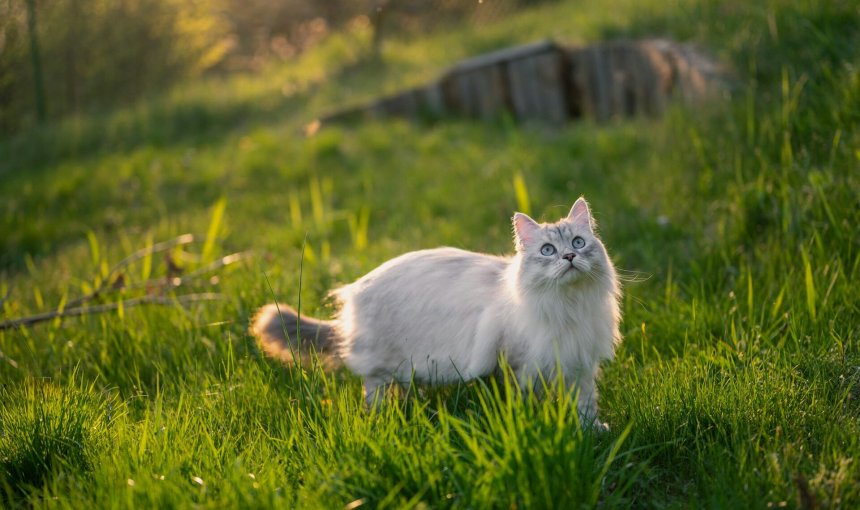
No matter where your cat likes to hang out – exploring the great outdoors can do them a world of good. It’s why outdoor cats tend to be such adventurous, enterprising little things. Their wanderings around your neighborhood help keep their instincts sharp and stay naturally fit.
Why, then, are purely outdoor cats only likely to live around 2-5 years on average? (Compared to indoor cats who might live 15-17 years by your side?)
Whether your kitty’s gotten used to hanging out outdoors – or if they’ve just always been an outdoor cat – keeping them safe is priority #1.
Because even if yours comes home regularly, cats do run away for a whole bunch of reasons. Or your outdoor cat might end up sick, injured or in trouble – maybe too far away for you to intervene.
So, what can you do to make sure they’re safe when you’re not with them? Here are 10 things to consider when it comes to keeping your outdoor cat safe.
- How long do outdoor cats live?
- 10 ways to keep your outdoor cats safe
- 1) Make sure someone can always identify your cat
- 2) Spay or neuter your cat
- 3) Stay on top of your cat’s vaccine shots
- 4) Consider the environment
- 5) Beware of toxic plants
- 6) Provide enough food and water
- 7) Build a cat enclosure
- 8) Keep your outdoor cat warm in winter
- 9) Train your cat to come home
- 10) Track your cat’s everyday activity
How long do outdoor cats live?
Now we weren’t kidding when we mentioned that outdoor cats tend to fewer than 9 lives compared to indoor cats.
Because unfortunately, when you let out a domesticated cat outdoors on the regular, it increases their chances of having a shorter lifespan compared to indoor kitties1.
This is why it’s so important to keep your outdoor cat safe and make sure you can track them wherever they go. Which could look like:
- Ensuring they’re microchipped – so a vet or local shelter can identify them (and you as the owner)
- Working on your cat’s recall – or coming back to you when you call them
- Setting up a safe outdoor space for them (like a catio or a heated enclosure for the winter months)
- Following their every step in real-time – with a cat GPS tracker.
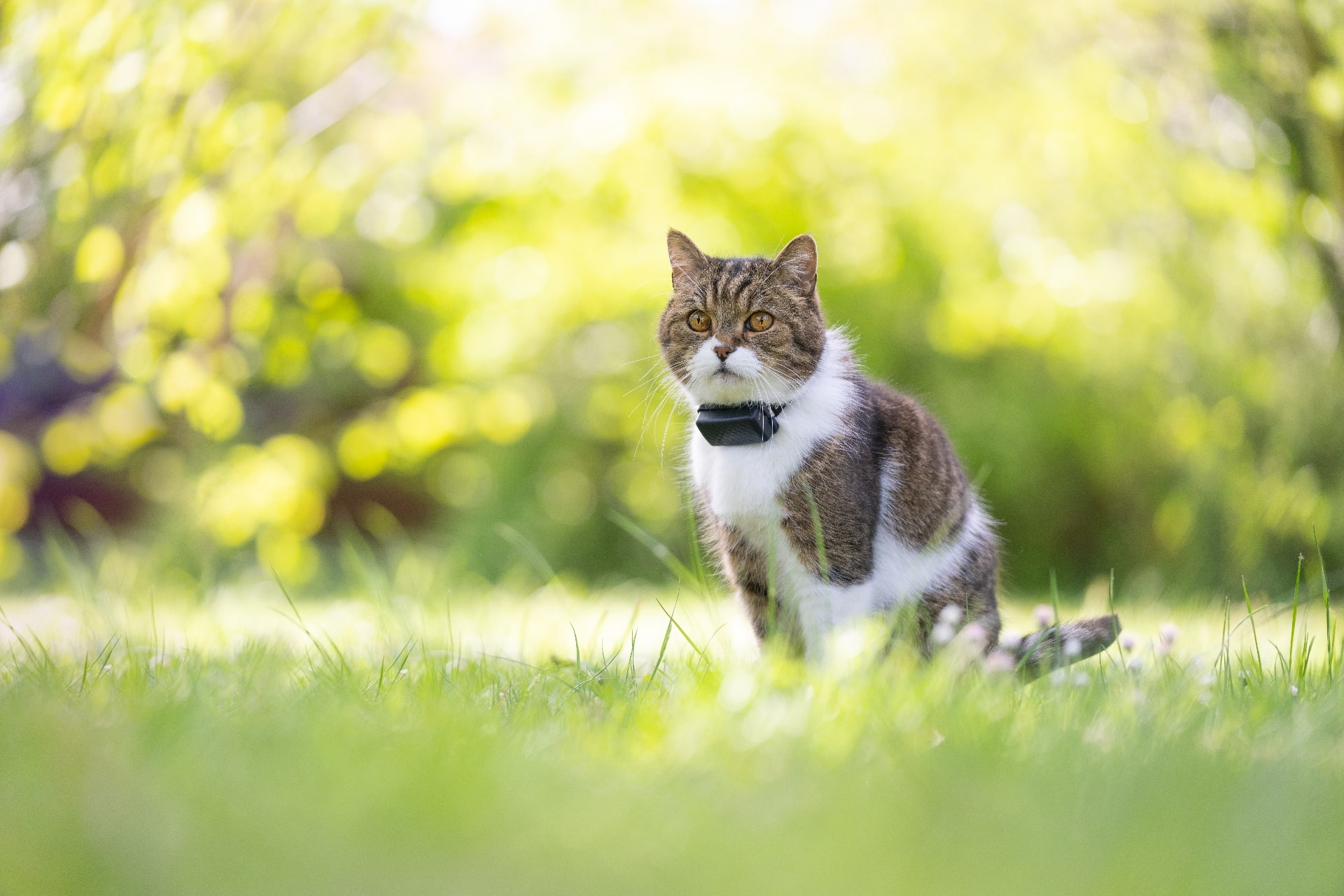
But why do indoor cats live longer than outdoor cats? Well, it’s simple. Outdoor cats might enjoy their adventures – but there’s always the risk they might be:
- Hit by a passing car
- Poisoned by biting, licking, or tasting a toxic substance (like antifreeze) or a poisonous plant
- Injured from picking a fight with another pet or predator
- Infected by a wild animal or pests – or from environmental allergens, like pollen
- Lost and unable to find their way back home – often for weeks or months on end
- Stuck or trapped in a tight space
- Stolen by pet thieves
- Hurt by an ill-meaning person
Read more:
💡In times like these, following your cat’s every step in real-time can be a lifesaver.
Because if you’re tracking them with, say, a cat GPS tracker – you can check where they’re off roaming with just a glance at your phone. (And pick them up if you notice they’re off wandering too far from safety.)
10 ways to keep your outdoor cats safe
As a responsible cat parent, you want to keep kitty safe – but without compromising on their freedom or independence.
So here are 10 ways to keep your outdoor cats safe – no matter how far they’re off adventuring.
1) Make sure someone can always identify your cat
If your cat goes outside, your number one worry is probably them getting lost.
That’s why it’s crucial, first and foremost, to make sure someone can properly identify your cat if they are lost and found by someone else.
Which is why we’d recommend ensuring your cat has:
- A proper fitting safety collar with a breakaway mechanism (check out our cat collar training guide for tips on getting your cat used to a collar)
- ID tags on the collar, with your name and phone number
- A microchip (keep your contact details up to date)
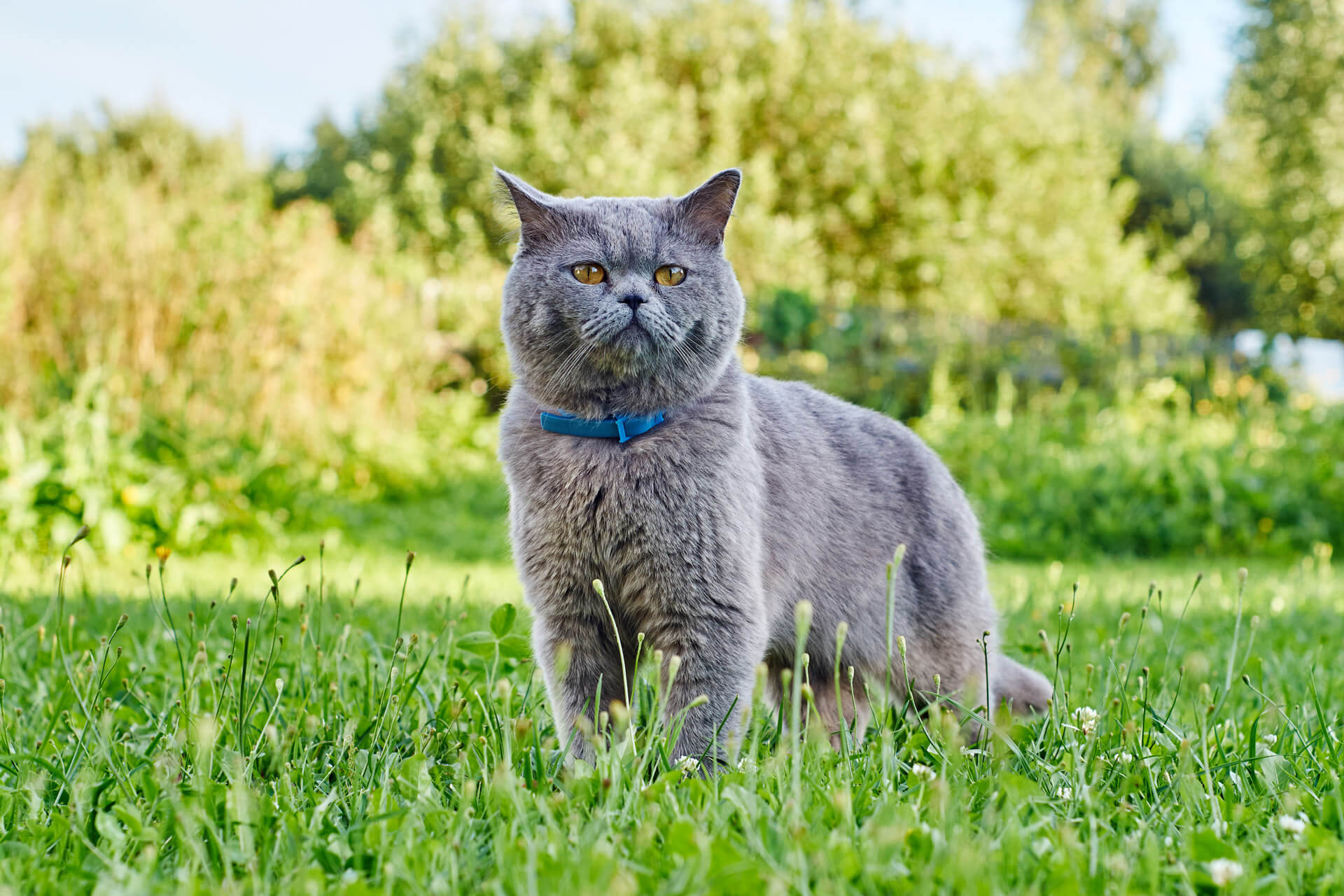
⚠️ Despite numbers having dropped over the years, it’s estimated that more than half the cats that are picked up by shelters end up being euthanized.2 Why? Because they have no identification details – so there’s no way to tell who their owners might be.
Which you can avoid by ensuring they have at least something to help others identify them and contact you, in case your cat wanders off too far from home. (Or gets “adopted” by a completely new family altogether!)
Just remember:
- ID tags might fall off or become faded.
- And a microchip can’t actually help you locate your lost cat in real-time or over an unlimited range.
So for 100% peace of mind, strap a GPS tracker to your cat’s collar. That way, you’ll always know where they are, and where they’ve been.
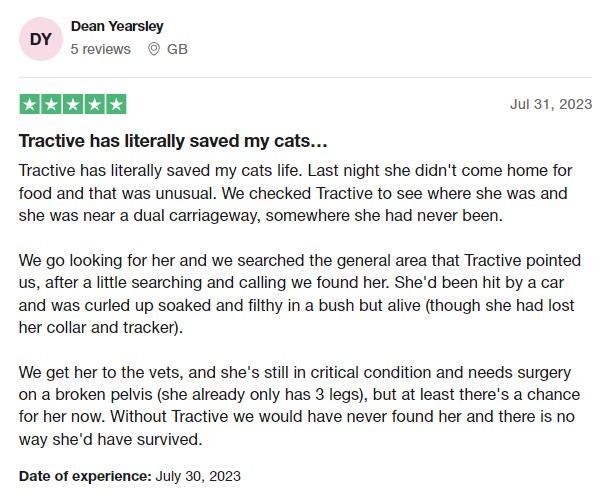
2) Spay or neuter your cat
Like microchipping, spaying or neutering your cat is also a must before letting them outside.
Why? Because a “fixed” cat is less likely to go off wandering to find themselves the purr-fect mate. Which might end up with an angry neighbor at your doorstep, demanding kitten support…or you graduating from cat parent to cat grandparent.
⚠️ Reproductive and mating instincts are also a primary reason why outdoor cats tend to run away from home. (And come to think of it – indoor cats too.)
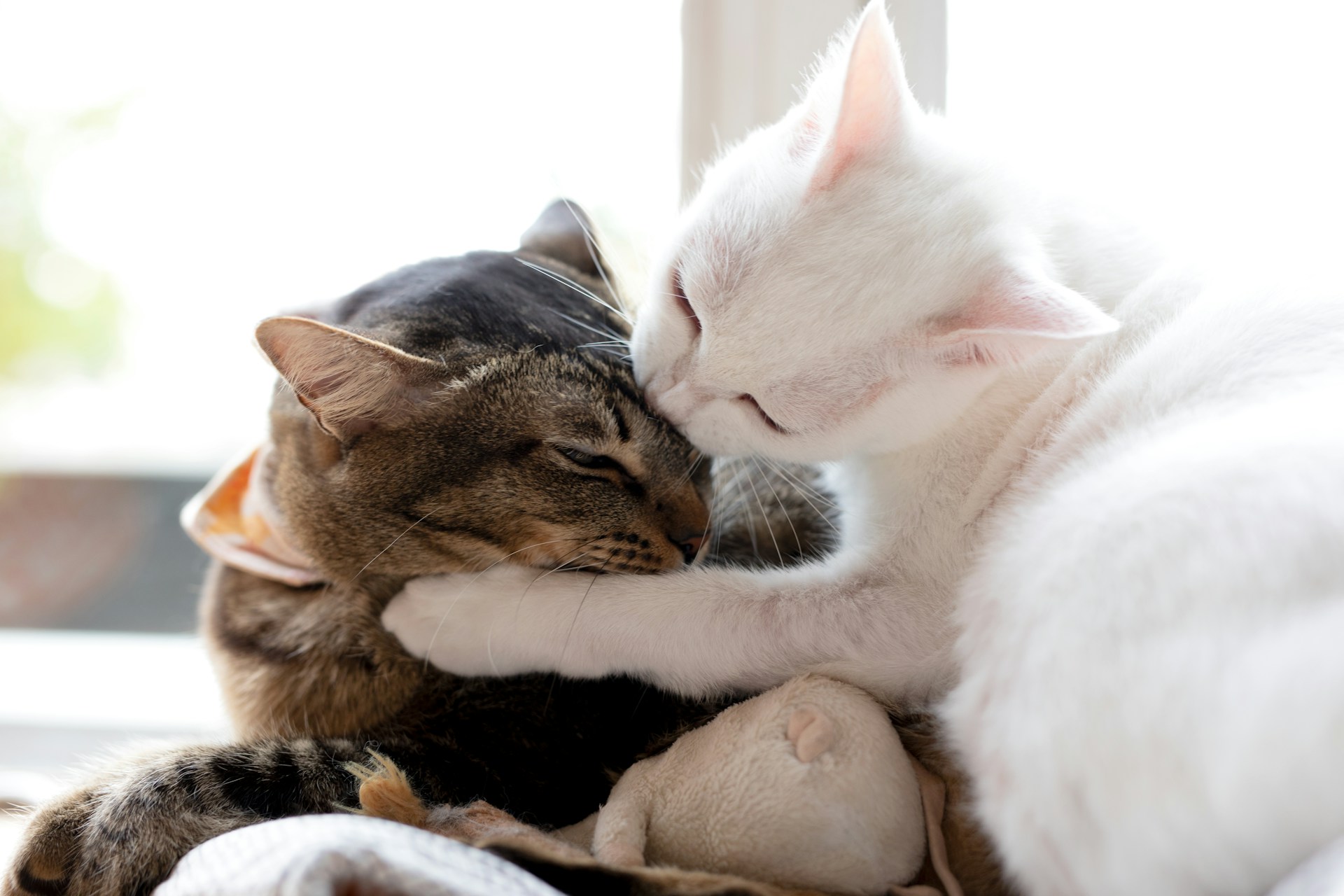
So if you spay or neuter your cat, this will help prevent:
- An unexpected pregnancy
- Other mating-related diseases
- An escape attempt to find a mate
- Injuries from fights with other cats (which in turn may increase their risk of infection or injury)
In some countries, neutering outdoor cats is now mandatory, so make sure to check your local laws before making the decision to have an outdoor cat.
Besides, keep an eye out for changes in your cat’s behavior – like increased vocalization, escape attempts, or even a drop in their everyday activity. These might indicate your outdoor cats are either in heat…or might be expecting a bundle of joy in a few weeks.
Read more:
- Cat In Heat? What You Need To Know.
- Is My Cat Pregnant? What To Watch Out For
- Why Is My Cat Crying? The Real Reasons Behind Feline Tears.
3) Stay on top of your cat’s vaccine shots
Cats exposed to the outdoors are more at risk of viruses, such as cat flu. In some cases, these viruses can be deadly.
So make sure your cat has all the necessary vaccines before letting them outdoors. Your cat may also need protection against other tiny invaders such as worms and fleas.
Read more: Why Is My Cat Sneezing?

💡Tracking your outdoor cat’s movements in real-time can even help you figure out where they like to wander off most.
(Like the neighboring barn or that one patch of woodland full of poisonous plants that they just have to go hunting in.)
So with your trusty Tractive GPS, you can actually set up a “safe zone” around your backyard – and “no go zones” for those spots you don’t want your cat picking up something infectious from.
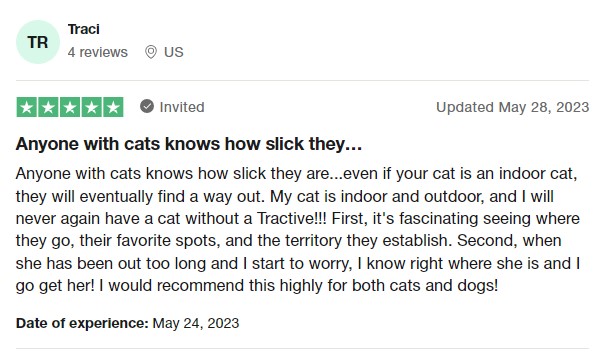
4) Consider the environment
Think about the surroundings and environment where your cat will be roaming. Each setting brings a different set of hazards for cats, so learn about the risks and reduce them if possible.
For example, do you live by a highway, or have a neighbor who threatens your cat? In that case, it may be better to keep your cat indoors when possible. On the other hand, some areas, such as a farm, may be safer for your cat to explore freely.
⚠️ Outdoor cats aren’t exempt from the occasional dumpster diving trip. Make sure to set up your community garbage dump as a “no go zone” – else your cat might end up eating something fatally toxic by accident.
Read more:
- What Human Foods Can Cats Eat? (And How Much?)
- What Can Cats Not Eat? (And Why Not?)
- Cat Feeding Schedule: How Often Should I Feed My Cat?
5) Beware of toxic plants
In case you decide to let your cat outside, be aware of potential plant-based dangers that could threaten your cat’s health.
There’s an extensive list of plants that are toxic to cats, some of which can even lead to liver failure and death. Including:
- Azaleas and Rhododendrons
- English Ivy
- Oleander
- Spanish Thyme
- Tulip and Narcissus
Read more:
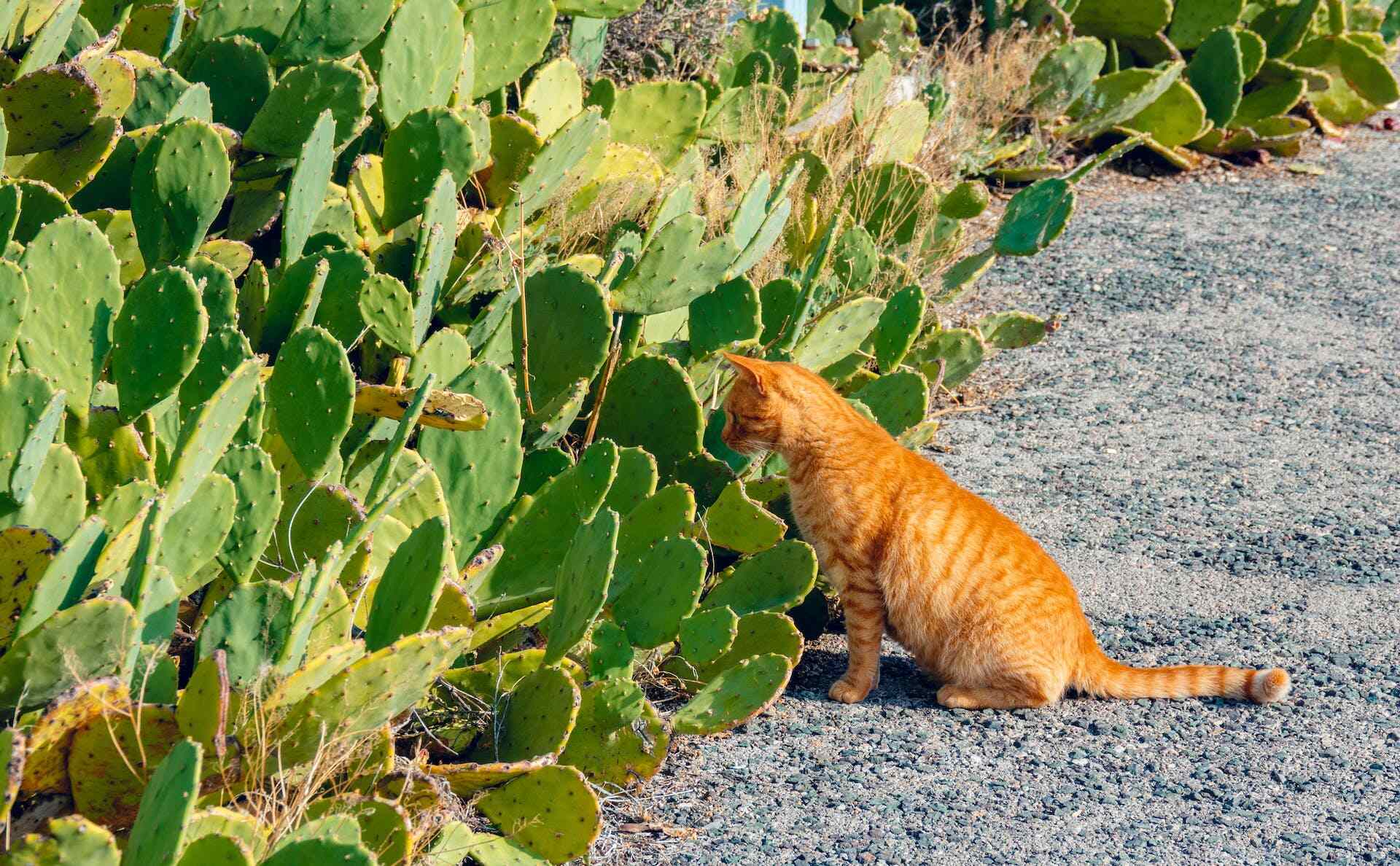
💡 Cats tend to favor specific spots to hide, hunt, or just hang out in. Which you can pick up on with your trusty Tractive device’s Heat Map & Location History.
Now, you can intervene if you notice kitty spending too much time in that one patch of woodland full of poisonous plants. (And get them to safety in case you notice them wandering a bit too close.)
6) Provide enough food and water
Cats that go outside will likely get a lot more physical activity than cats who stay indoors. You may need to feed your cat accordingly, and always make sure your cat has access to plenty of fresh water. (Especially in the warmer months.)
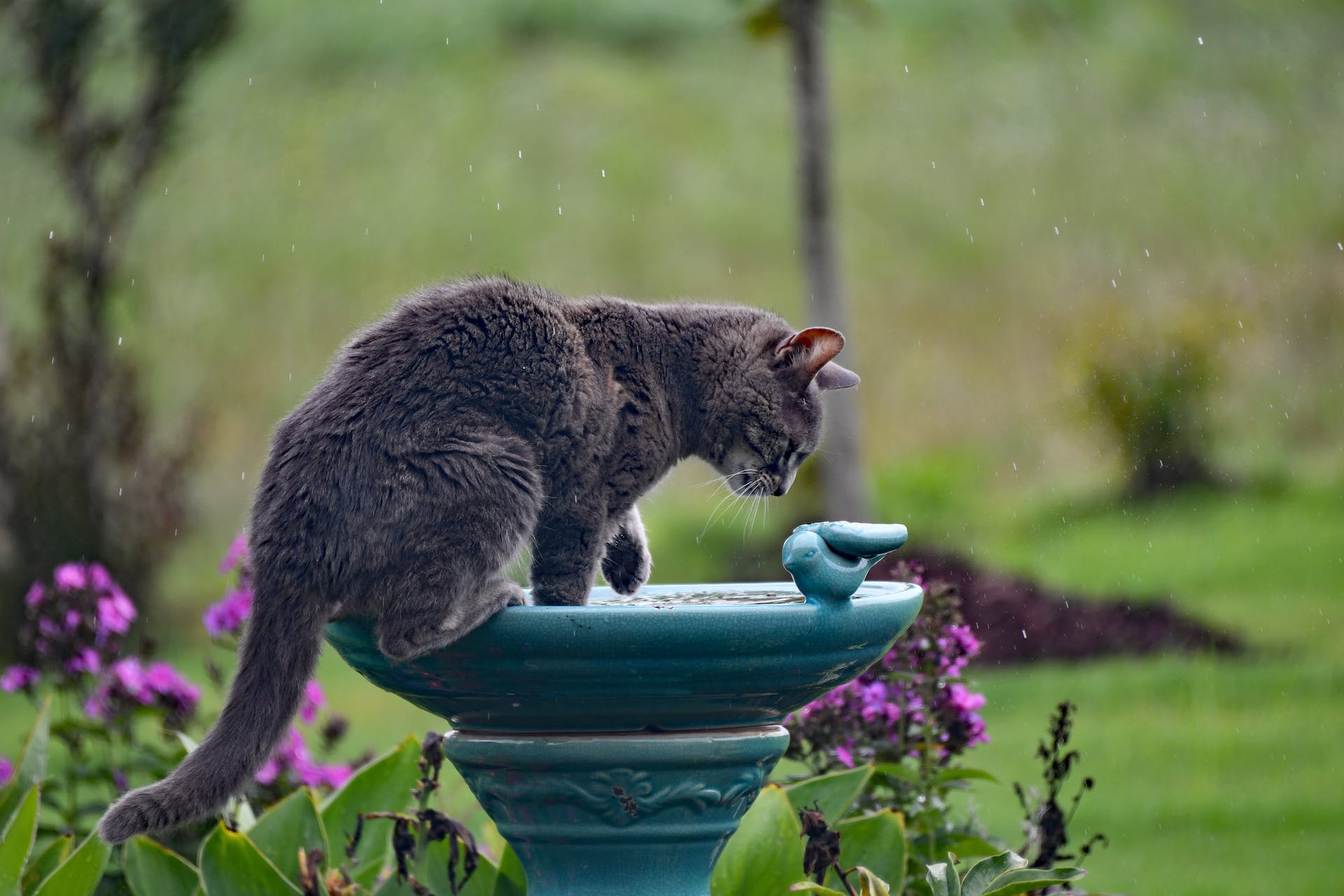
💡Ensuring you’re providing your outdoor cat enough food and water can help redirect their hunting and foraging behavior away from your neighborhood dumping grounds – where they might eat something potentially toxic instead.
Read more: Cat Hunting Behavior: Why Does My Cat Hunt?
7) Build a cat enclosure
If you want to keep your outdoor cat nearby, a “catio” (a.k.a cat patio) or cat enclosure are good options. These are small enclosures, usually in the garden or backyard, that your cat can enjoy the outdoors in.
Here are a few tips on how to design your cat’s catio:
- If you’re building the catio yourself, make sure to look for claw-resistant mesh.
- Depending on the catio’s size, you can fill it with cat trees and scratching posts.
- Make sure these toys are either waterproof or otherwise bring them inside when it rains.
- Build a variety of shelves of different sizes and heights to give your pet several spots to enjoy the view.
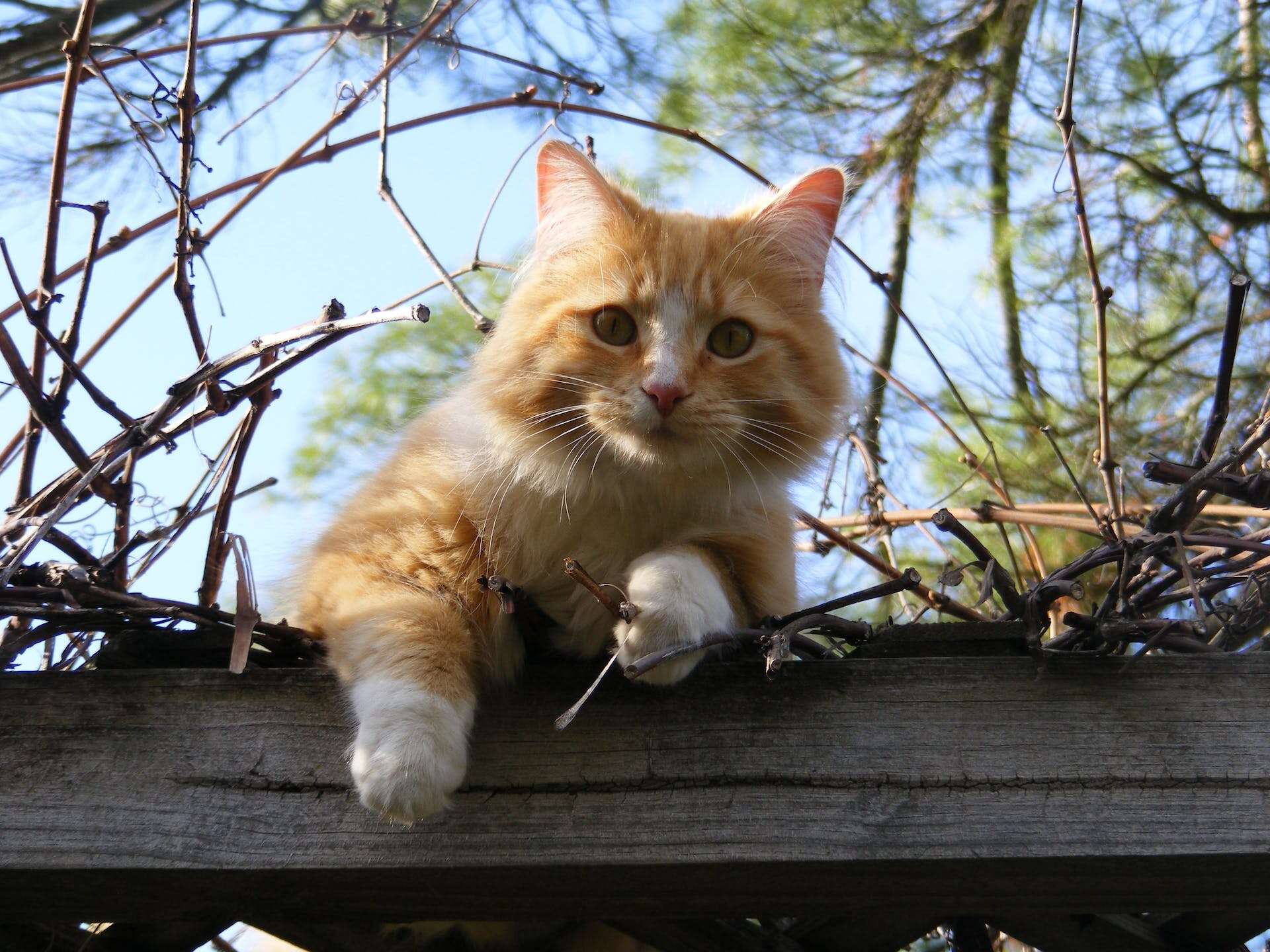
- In winter, or when it’s colder, your cat may still be willing to enjoy the catio if you cover the floor with fabric to protect their paws from frostbite and provide them with blankets and heating pads to stay warm while still getting some fresh air.
- If you don’t have a backyard, look into catios that can be attached outside your windows. They might be small, but can still provide your cat with lots of fresh air and a different view.
Read more: Catio: What Makes The Perfect Outdoor Cat Enclosure For Your Cat
⚠️ Just remember – not all cats adapt to catios. Whether it’s from being “cooped up” indoors – or just their habit of sleeping outdoors.
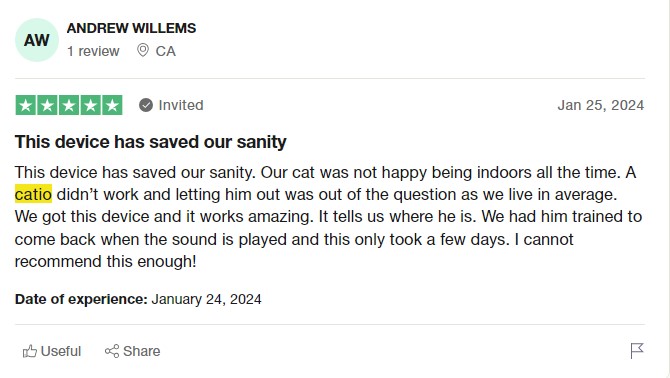
8) Keep your outdoor cat warm in winter
If your cat stays outside during the cold winter months, it’s important to make sure they can stay warm. Here are some tips on how to keep outdoor cats warm:
- Make sure kittens, senior cats, or sick cats are never kept outside if the temperature is below 45°F (8°C)3.
- If possible, give your cat shelter for the winter or build an outdoor cat house.
- Make sure the outdoor cat house is kept dry and warm. Use a water-resistant insulator.
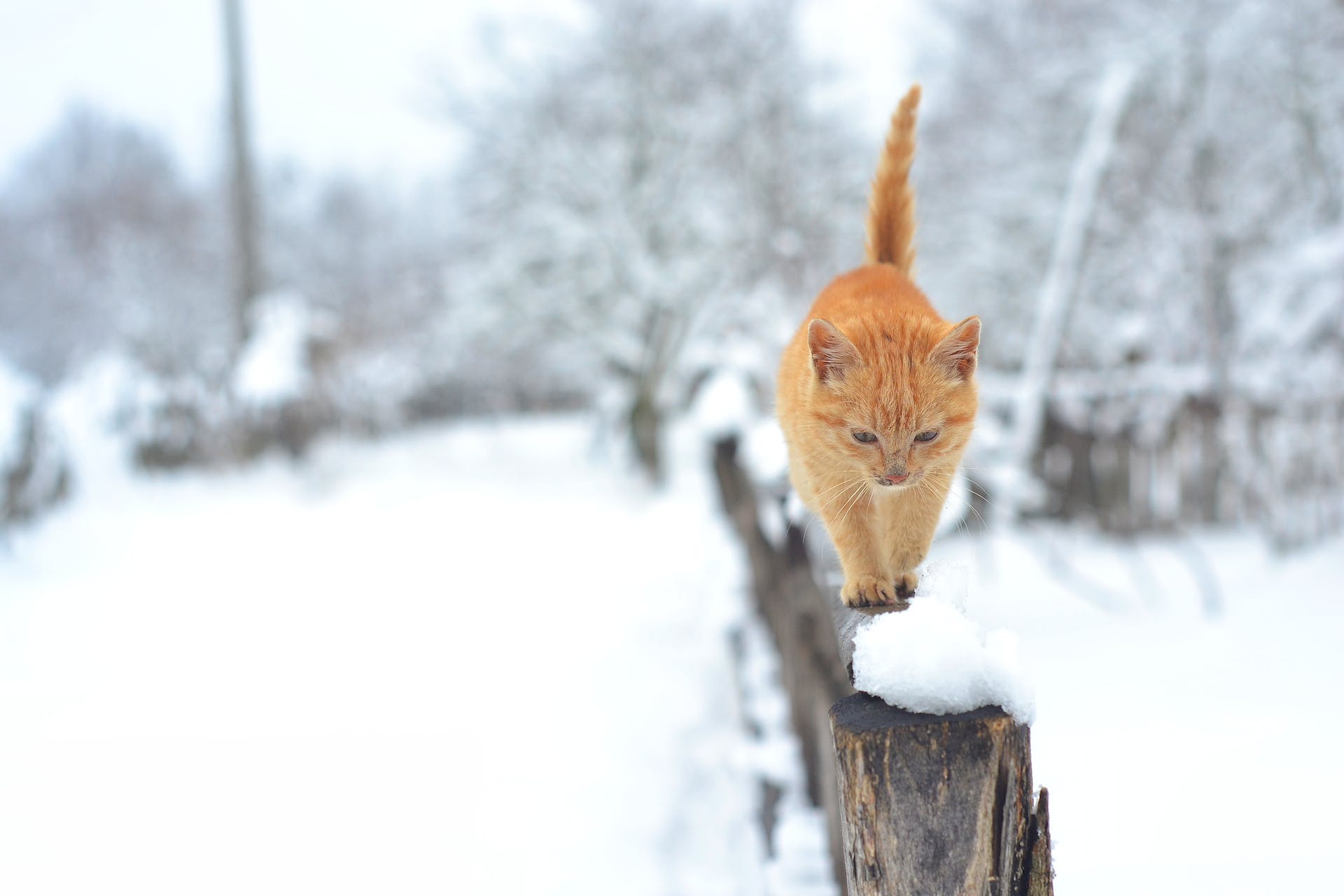
- Include a heated cat bed inside the outdoor cat enclosure.
- Provide warmed food and water and make sure it’s protected from rain and snow.
- Install a cat flap, so you cat cat go outside when they want, and return indoors for shelter anytime.
Read more: Outdoor Cat Care In Winter: How To Keep Yours Safe
9) Train your cat to come home
The safest outdoor cats are those who are well-trained and come home regularly, or stay within close range of your house. And one command that’ll keep them safe and prevent them from wandering off too far – or returning to you? Coming back when called.
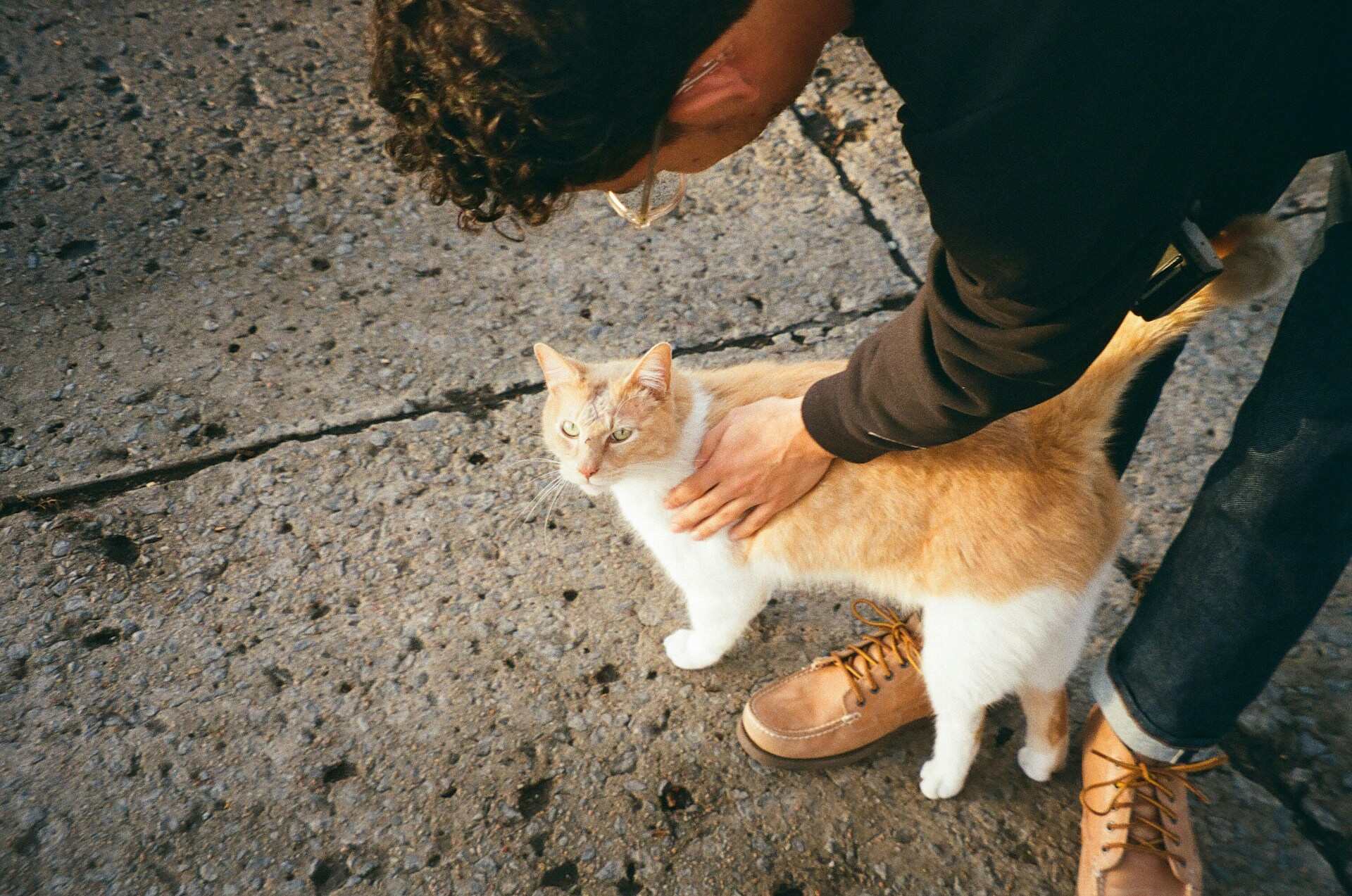
Use treats, calling, and of course, lots of affection, to ensure they stay nearby. Or try a fun, practical method like cat clicker training to help your cat learn to “come” via positive reinforcement.
💡Some Tractive cat parents have even been able to train their cat to come home when they hear the tracker “beep.” Aka, using your tracker’s Sound function to trigger a high-pitched melody. Helping you find your cat if they’re out exploring when it’s dark outdoors.

10) Track your cat’s everyday activity
You might’ve gotten your cat fixed, gotten them their shots, take them to the vet everyday…and even with all that, your outdoor cat might still end up picking up something infectious or even potentially life-threatening from their adventures.
And the scariest part? Cats often mask any signs of discomfort – even when they’re struggling with a sickness, infection, or even poisoning.
So by the time they’re seeking your attention – meowing or crying – it’s likely their condition might’ve worsened.
And with an outdoor cat who you likely can’t monitor 24/7 – how are you supposed to pick up on a sign they’re sick in the first place?

💡 One of the first signs your outdoor cat might be feeling poorly is a drop in their activity.
In fact, vets even recommend tracking your pets’ daily activity – so you can intervene more quickly in a situation where they’re sick, injured, pregnant, or in pain.
Which is where your Tractive device comes to the rescue – helping you catch on to a change in your cat’s regular activity early on with its built-in motion detector.
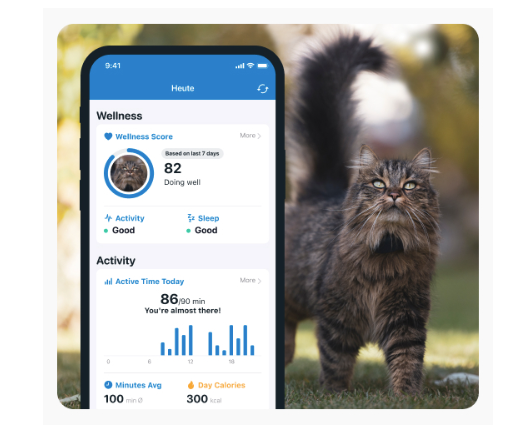
Once you’ve set up Activity Tracking on your device, you can stay on top of how active your outdoor cat is all day, plus make sure they’ve gotten enough exercise.
And even if you haven’t been tracking everyday, you’ll get a Health Alert if your cat’s active minutes drop by quite a bit.
(So you can take action early – and get your cat to a vet before their condition worsens. Avoiding an expensive and avoidable medical bill down the line.)

So for the same price as a pack of cat treats a month, you can get 24/7 peace of mind.
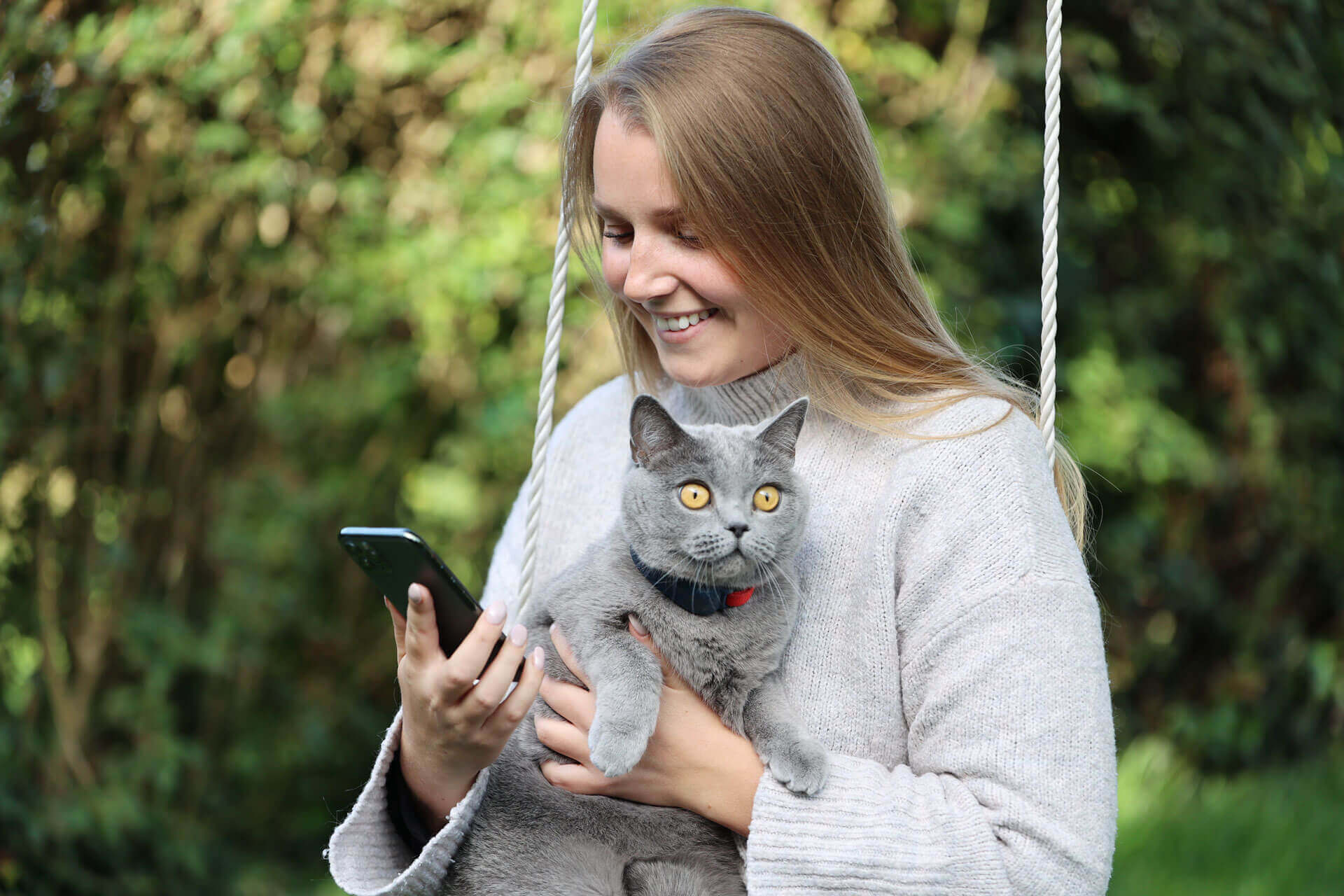

“Tractive is the #1 cat GPS tracker in the industry. And it’s the highest quality cat tracker you can find.
I was able to set the safe zone as my house area and once my cat gets outside I get an alert right away.
In fact, it probably saved my cat’s life that time she chased a bird and got lost. She was scared and I was able to find her with the help of the GPS tracker.
Tractive’s chip frequently calculates your cat’s location and is updated on the map every 2-3 seconds. Furthermore, the LED will help you guard your furry friend at night.”
– Clair Chesterman, Owner of CFA and CCA-registered cattery and fostering company, FluffyMeowPaws

Track your cat’s wellbeing
See how they’re doing at a glance with Wellness Score. Know if they’re getting enough exercise. Spot nap patterns. Detect issues early and keep them healthy.
So, those were our tips for keeping an outdoor cat safe! We hope these ideas help you to take care of your outdoor cat and ensure they live a long, healthy life. Check out the video below for even more tips:
And if you’ve found this post helpful, share it with a friend or a loved one – and let’s help build a safer, kinder world for our furry friends together.
